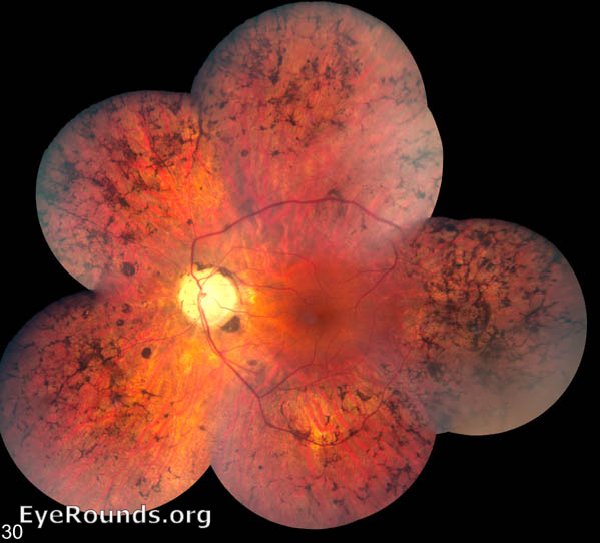
The montage color fundus photographs are from a 57-year-old male with molecularly confirmed retinitis pigmentosa (RP). He has a Pro347Ala change in the rhodopsin gene, which is consistent with autosomal dominant inheritance pattern. RP disease is rod-predominant photoreceptor degeneration, with late-stage atrophy of the cones and retinal pigment epithelium. It presents early in life with nyctalopia as a common first symptom. Visual field loss classically occurs in a ring-shaped scotoma with sparing of the central macula until late in the disease. Classic funduscopic findings include waxy-pallor of the optic disc, severe arteriolar attenuation, and bone-spicule-like pigmentation in the mid-peripheral retina. Routine dilated fundus examination and optical coherence tomography are important, as patients may develop cystoid macular edema, which may be respond to treatment with topical carbonic anhydrase inhibitors.




Ophthalmic Atlas Images by EyeRounds.org, The University of Iowa are licensed under a Creative Commons Attribution-NonCommercial-NoDerivs 3.0 Unported License.